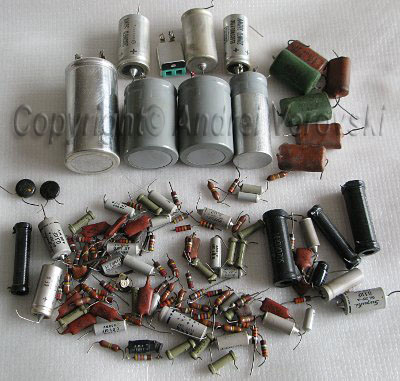rajuncajun
Member
Hi, I have a pristine SM-G205 tube receiver that I thought about recapping since it's 40 years old. However, it doesn't seem to contain any of the nasty old paper caps. I am wondering about the large filter cap in the canister though, it's a double cap actually. Do those go bad often? I guess if I don't hear 60 cycle hum then it's not a problem.
Any suggestions of whether to mess with this thing or just leave it be as long as it sounds ok?
Thanks,
Andrew
Any suggestions of whether to mess with this thing or just leave it be as long as it sounds ok?
Thanks,
Andrew





